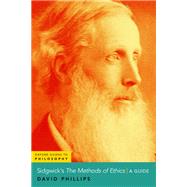
Sidgwick's The Methods of Ethics A Guide
by Phillips, David-

Free Shipping On All Orders!*
Free economy shipping applies to all orders shipped to residential addresses. Orders shipped to campus receive free standard shipping. Free shipping offers do not apply to Marketplace items.
-
 eCampus.com Device Compatibility Matrix
eCampus.com Device Compatibility Matrix
Click the device icon to install or view instructions
Buy New
Rent Textbook
Rent Digital
Used Textbook
We're Sorry
Sold Out
Summary
general readers in order to aid in interpreting and understanding the original text. Author David Phillips highlights connections between Sidgwick's work and contemporary work in moral philosophy and in the history of moral philosophy, paying particular attention to his relationships with the
predecessors he discusses--including Kant and Mill--and Moore and Ross, his most celebrated successors in the British intuitionist tradition he revitalized.
The book's first eight chapters end with brief suggestions for further reading. At the end of the final three chapters, when all relevant parts of the Methods have been discussed, there are more substantial overviews of the secondary literature examining the aspects of Sidgwick's work that have
generated the most interest among his commentators: metaethics and moral epistemology; consequentialism versus deontology; and egoism and the dualism of practical reason. All in all, Phillips has produced an excellent map of the central concerns found in Sidgwick's text that will aid introductory
readers' comprehension for years to come.
Author Biography
David Phillips is a Professor of Philosophy at the University of Houston. His research interests are in ethics and the history of ethics with a particular focus on British moral philosophers. He is the author of Sidgwickian Ethics (OUP, 2011) and of Rossian Ethics: W.D. Ross and Contemporary Moral
Theory (OUP, 2019).
Table of Contents
Chapter One: Introduction (Methods Prefaces)
Chapter Two: Sidgwick's Project and the Three Methods (Methods I.I and I.VI)
Chapter Three: Meaning, Motivation, and Free Will (Methods I.III, I.IV, and I.V)
Chapter Four: Intuitionism and Goodness (Methods I.VIII and I.IX)
Chapter Five: The Method of Egoism (Methods I.VII and Book II)
Chapter Six: The Critique of Common-Sense Morality (Methods III.I-III.XI)
Chapter Seven: Philosophical Intuitionism (Methods III.XIII)
Chapter Eight: Hedonism (Methods III.XIV)
Chapter Nine: Utilitarianism: Meaning and Proof (Methods IV.I and IV.II)
Chapter Ten: Utilitarianism and Common-Sense Morality (Methods IV.III, IV.IV, and IV.V)
Chapter Eleven: The Dualism of Practical Reason (Methods Concluding Chapter)
An electronic version of this book is available through VitalSource.
This book is viewable on PC, Mac, iPhone, iPad, iPod Touch, and most smartphones.
By purchasing, you will be able to view this book online, as well as download it, for the chosen number of days.
Digital License
You are licensing a digital product for a set duration. Durations are set forth in the product description, with "Lifetime" typically meaning five (5) years of online access and permanent download to a supported device. All licenses are non-transferable.
More details can be found here.
A downloadable version of this book is available through the eCampus Reader or compatible Adobe readers.
Applications are available on iOS, Android, PC, Mac, and Windows Mobile platforms.
Please view the compatibility matrix prior to purchase.

